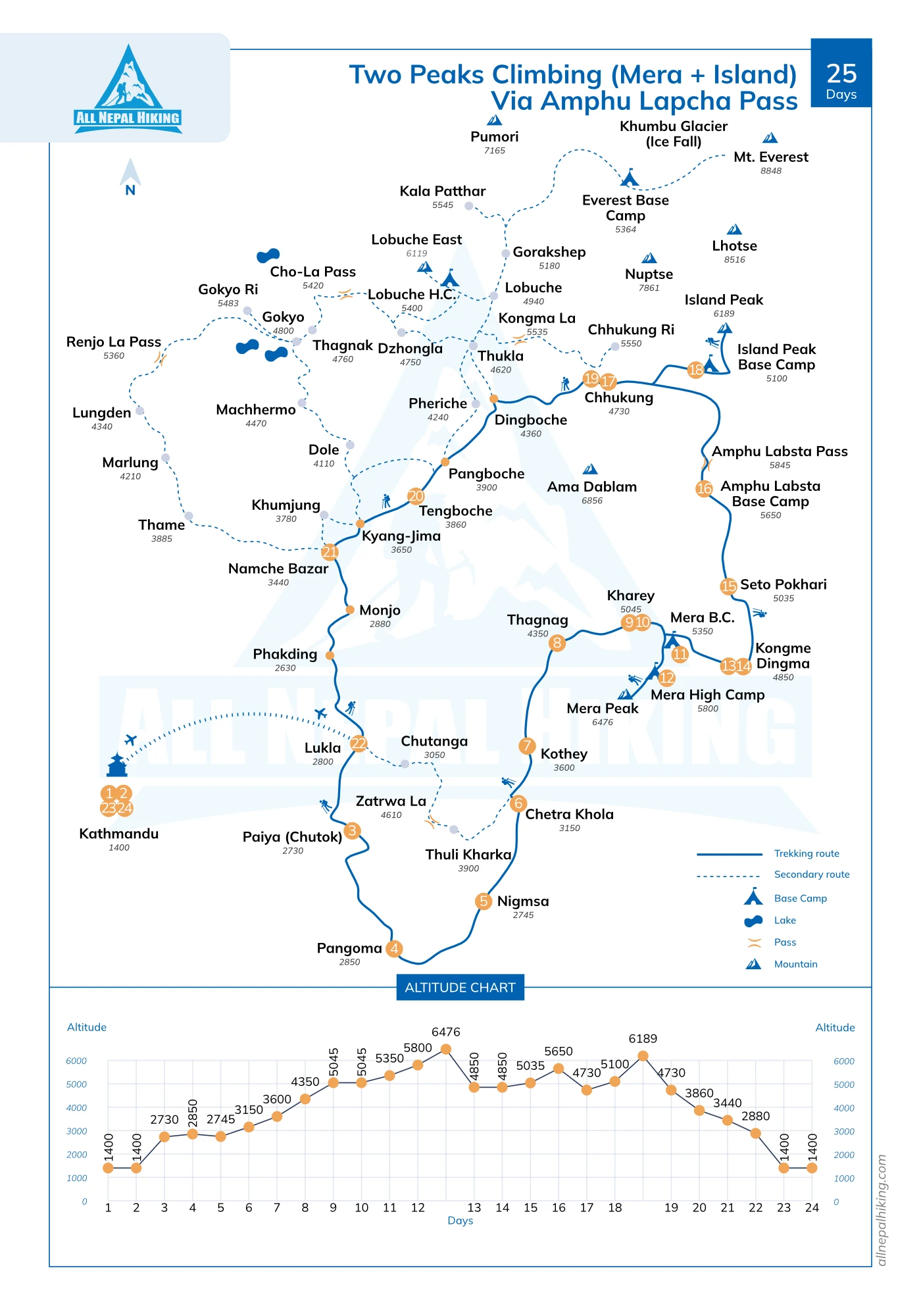Island Peak and Mera Peak are two popular climbing destinations in the Everest region of Nepal. These peaks offer challenging yet rewarding experiences for climbers seeking to conquer Himalayan summits. While these climbs can be undertaken separately, combining them into a single expedition allows climbers to maximize their time in the region and tackle two impressive peaks in one trip.
Combining the Island Peak and Mera Peak climbs allows climbers to experience the diversity of the Everest region. The expedition takes you through remote and less-visited areas, providing a more off-the-beaten-path adventure compared to the popular Everest Base Camp route. While the climbs themselves are challenging, they offer an opportunity to immerse yourself in the rich Sherpa culture, witness breathtaking natural beauty, and create lasting memories.
It's important to note that attempting these climbs requires physical fitness, prior trekking or climbing experience, and acclimatization to the high altitude. It is highly recommended to undertake these climbs with the assistance of experienced guides or mountaineering companies who can ensure your safety and provide the necessary equipment and support throughout the journey.





 based on 1 review
based on 1 review